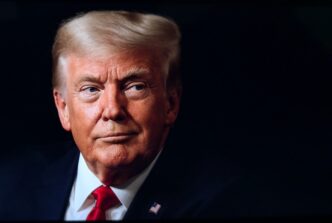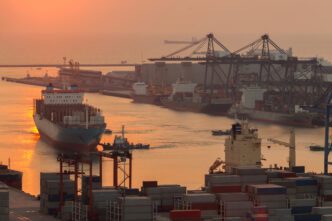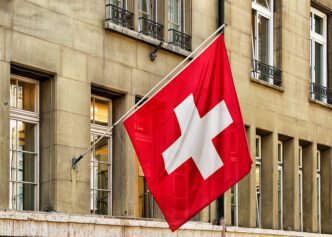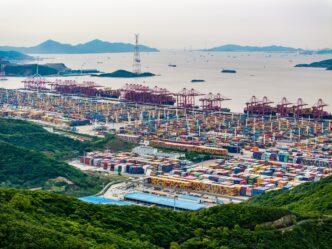Executive Summary
- The U.S. economy presents a complex and contradictory picture, marked by uncertainty and a cautious stance from the central bank on interest rates.
- Economists are concerned that President Trump’s tariffs and immigration policies could lead to “stagflation,” a view consistently dismissed by the White House.
- Despite signs of consumer spending resilience, sluggish job creation and accelerating producer prices contribute to a mixed economic outlook and persistent inflation concerns.
The Story So Far
- Concerns persist among some economists that President Donald Trump’s policies, including tariffs and immigration crackdowns, could risk a return to 1970s-era “stagflation.”
- The US economy is presenting a complex and often contradictory picture with recent data points, leading to uncertainty among economists and a cautious stance from the US central bank regarding interest rate adjustments.
- The historical precedent of 1970s-era “stagflation”—a period characterized by stagnant growth and spiraling prices—is a key concern for economists evaluating current economic trends.
Why This Matters
- President Trump’s trade and immigration policies are raising concerns among economists about a potential return to 1970s-era “stagflation,” characterized by stagnant economic growth and rising prices.
- Conflicting economic signals, including sluggish job growth and robust consumer spending, are causing the US central bank to delay interest rate adjustments, leading to policy uncertainty.
- Anticipated price increases due to Trump’s tariffs, along with accelerated wholesale prices, suggest broader inflation that could impact consumer spending and contribute to stagflation fears.
Who Thinks What?
- Some economists and experts are concerned that President Trump’s tariffs and immigration policies could lead to “stagflation,” characterized by stagnant economic growth and rising inflation, pointing to sluggish job creation and accelerating wholesale prices.
- The White House consistently dismisses concerns about the economy’s direction and the potential for stagflation, rejecting expert opinions and even dismissing officials who report unfavorable data.
- The chief financial officer of JPMorgan Chase and some economists, like Michael Pearce from Oxford Economics, see signs of economic resilience, particularly in robust consumer spending, which they believe indicates consumers are largely “fine” despite overall slower growth.
The United States economy is presenting a complex and often contradictory picture, with recent data points creating uncertainty among economists and leading to a cautious stance from the US central bank regarding interest rate adjustments. Concerns persist among some experts that President Donald Trump’s policies, including tariffs and immigration crackdowns, could risk a return to 1970s-era “stagflation”—a period characterized by stagnant growth and spiraling prices—though the White House has consistently dismissed such concerns.
Economists’ Concerns and White House Response
Economists have raised alarms that President Trump’s tariffs and immigration policies could trigger a self-inflicted economic crisis, echoing the stagflation seen in the 1970s. This scenario involves a combination of stagnant economic growth and rising inflation. The White House has consistently rejected these expert opinions, even going as far as to dismiss the US Bureau of Labor Statistics commissioner in response to a jobs report.
Labor Market Signals and Central Bank Stance
Recent labor market data has contributed to the prevailing uncertainty. Job creation was notably sluggish in May, June, and July, with the number of discouraged workers reportedly increasing. The August 1 jobs report, which indicated near non-existent job growth, prompted a stock market decline and led to the aforementioned dismissal of the BLS commissioner. Amidst these conflicting signals, the US central bank remains in a state of paralysis, awaiting clearer data before making decisions on interest rates.
Signs of Economic Resilience
Despite some pessimistic assessments, certain economic indicators suggest underlying resilience. While overall economic growth slowed to an annual rate of 1.2% in the first half of the year, consumer spending has proven more robust than anticipated. Shares, after an initial dip following the August 1 jobs report, quickly recovered their upward trajectory.
The chief financial officer of JPMorgan Chase, America’s largest bank, stated last month that the bank continues to “struggle to see signs of weakness,” observing that “the consumer basically seems to be fine.” Further reinforcing this view, the US government reported on Friday that spending at retailers and restaurants increased by 0.5% from June to July, with June’s spending also revised upwards. Michael Pearce, deputy chief US economist at Oxford Economics, noted that “consumers are down but not out,” predicting a modest recovery in spending in the coming months due to tax cuts and a stock market rebound.
Inflation Outlook
While consumer prices rose 2.7% in July compared to a year ago, maintaining the same pace as June, forecasters anticipate price increases to widen in the months ahead. This expectation is partly due to President Trump’s delayed tariff plans, which allow firms to sell down pre-tariff stock before raising prices. Prices for certain imported staples, such as coffee and bananas, have already seen increases.
The producer price index, which measures wholesale prices before they reach consumers, accelerated at its fastest pace in over three years in July, signaling potential future consumer price hikes. Critically, both consumer and producer inflation data indicate that price upticks are not limited to goods, raising concerns among some analysts about a potential return of stagflation.
The US economy continues to present a mixed and perplexing picture, characterized by conflicting signals from the labor market, consumer spending, and inflation data. While some indicators point to resilience, concerns about the impact of trade policies and the potential for stagflation persist, leaving policymakers and economists grappling with uncertainty.








